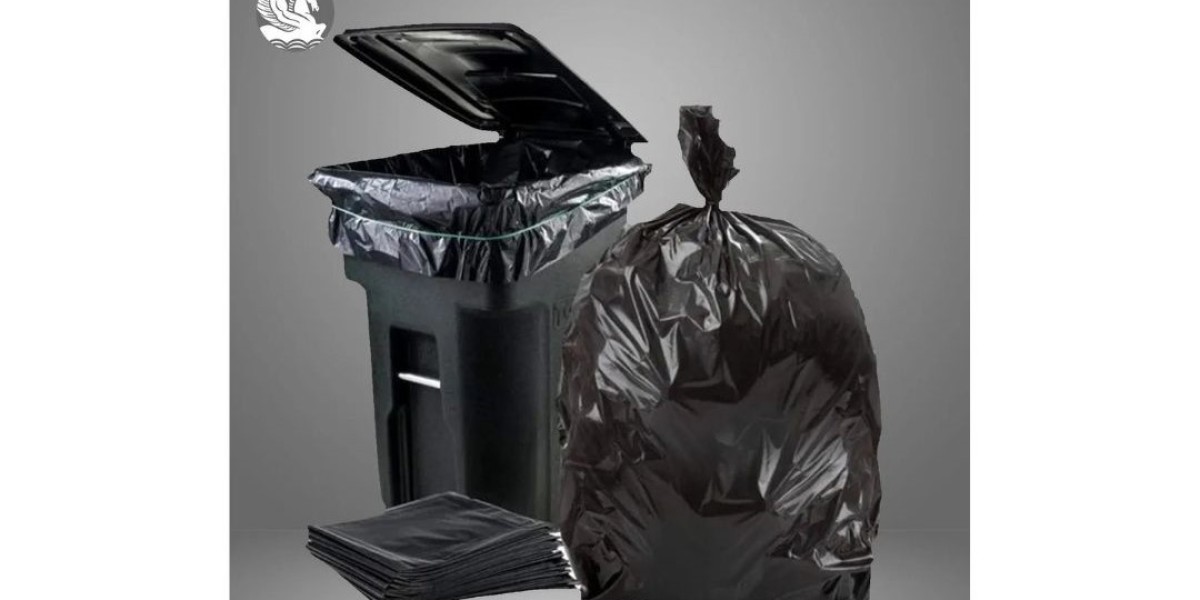From the bustling metropolis to the quietest village, the humble garbage bag plays a critical, yet often overlooked, role in maintaining public health and environmental well-being. More than just a convenient receptacle for our discarded waste, it acts as a crucial barrier, preventing the spread of disease, controlling odors, and facilitating efficient waste management systems. This seemingly simple product has evolved significantly over time, with advancements in materials, manufacturing processes, and design aimed at meeting the ever-changing demands of a growing global population. Understanding the nuances of garbage bag production, distribution, and the challenges faced by those involved in this industry provides a fascinating glimpse into a vital, often unseen, component of modern life.
A Material Evolution: From Humble Beginnings to Modern Polymers
The history of garbage bags is relatively recent, mirroring the rise of industrialized societies and increased consumerism. Before their widespread adoption, waste disposal was a more haphazard affair, often involving open-air dumping or rudimentary receptacles. The advent of polyethylene, a lightweight, durable, and cost-effective plastic, revolutionized the industry. This versatile polymer, derived from crude oil or natural gas, became the primary material for manufacturing garbage bags due to its excellent strength-to-weight ratio, resistance to moisture and chemicals, and ease of processing.
Early garbage bags were often thin and prone to tearing, leading to leaks and unpleasant experiences. However, continuous innovation in polymer science and manufacturing techniques has led to significant improvements. Today, garbage bags come in a wide array of thicknesses, strengths, and sizes, catering to diverse needs. High-density polyethylene (HDPE) and low-density polyethylene (LDPE) are the most common types of plastic used. HDPE offers greater strength and puncture resistance, while LDPE is more flexible and stretchable. The specific polymer blend and manufacturing process used directly impact the bag’s overall performance, influencing its ability to contain heavy loads, resist tearing, and withstand environmental stressors.
Manufacturing Processes: A Symphony of Science and Engineering
The production of garbage bags is a sophisticated process involving several stages, from polymer resin preparation to final packaging. The process typically begins with the procurement of raw plastic granules. These granules are then fed into an extruder, a machine that melts the plastic and forces it through a die, creating a thin film. This film is then cooled and either rolled into large sheets or cut into individual bag shapes.
Several different manufacturing techniques are used to produce garbage bags. The most common method is blown film extrusion, which creates a strong and uniform film. The molten plastic is extruded through a circular die and then inflated with air, forming a bubble. The bubble is cooled and then flattened into a continuous sheet of plastic. This sheet is then cut and sealed to create individual bags. Another method is cast film extrusion, which involves extruding the molten plastic onto a chilled roller, creating a flatter film. This method is often used for producing thinner, more flexible bags.
Adding colorants, stabilizers, and other additives can further enhance the bag’s properties. Colorants provide visual differentiation and can also be used to indicate the type of waste the bag is designed to contain. Stabilizers help to improve the bag’s resistance to UV light and other environmental factors. After the bags are formed, they undergo quality control checks to ensure they meet specific performance standards. This may involve testing the bags’ strength, tear resistance, and leak-proof properties. Finally, the bags are folded, packaged, and prepared for distribution. For a Garbage bags manufacturer in Gujarat, this process is often meticulously managed to meet the high demand within the state and beyond.
The Distribution Network: Reaching Homes and Businesses
The distribution of garbage bags is a complex network involving manufacturers, distributors, wholesalers, retailers, and ultimately, the end consumers. Garbage bags supplier in Ahmedabad, for example, will play a crucial role in ensuring a steady supply of bags throughout the region. Manufacturers often work with distributors who handle the logistics of storing, transporting, and selling the bags to various retail outlets. These retail outlets can range from large supermarkets and hardware stores to smaller convenience stores.
The efficiency of the distribution network is crucial to ensure that garbage bags are readily available when and where they are needed. The bags themselves come in various sizes, roll counts, and features like drawstrings or flaps. A good distribution network will need to cater to the needs of various customers by stocking different products.
Moreover, the rise of e-commerce has also transformed the distribution landscape. Consumers can now easily purchase garbage bags online from various retailers, providing them with greater convenience and choice. The growth of online sales requires efficient logistics to ensure timely delivery of the product. Garbage plastic bag India distribution channels are constantly adapting to new technologies and consumer expectations.
Sustainability Concerns and the Search for Eco-Friendly Alternatives
The increasing awareness of plastic waste and its environmental impact has put significant pressure on the garbage bag industry to embrace sustainable practices. Traditional polyethylene bags, derived from fossil fuels, are not biodegradable and can persist in landfills for hundreds of years. They also contribute to the global plastic pollution crisis, polluting oceans and harming wildlife.
In response to these concerns, the industry has begun to explore and adopt various eco-friendly alternatives. Biodegradable bags made from plant-based materials like cornstarch or potato starch offer a promising solution, as they can decompose under the right conditions. However, these bags often require specific composting facilities and may not be suitable for all waste types. Recycled plastic bags are another option, reducing reliance on virgin plastic. While the process of recycling plastic bags can be complex, it reduces the demand for new plastic and helps to divert waste from landfills.
The development of more sustainable garbage bag materials also poses challenges. The cost and availability of these alternatives, their performance compared to traditional plastic bags, and the consumer's willingness to adopt them are all factors that will shape the future of the industry. Innovation in material science and manufacturing is key to finding more environmentally friendly solutions. As such, both consumers and businesses have a role to play in choosing more sustainable products and supporting initiatives that promote responsible waste management.
Conclusion
The garbage bag industry is constantly evolving. Advancements in material science, manufacturing processes, and environmental regulations will continue to shape its future. Demand is predicted to stay robust, with further optimization of the supply chain. A Garbage bags manufacturer in Gujarat must adapt and grow to stay competitive.
The focus will shift towards developing more durable, cost-effective, and environmentally friendly garbage bag options. Further innovations will involve improved recycling technologies, the use of bio-based polymers, and smart waste management systems that reduce waste generation. The role of the garbage bag will remain essential to public health and environmental protection. Businesses and consumers will have the added responsibility to adopt the best and most sustainable methods.
FAQ
- What is the difference between HDPE and LDPE garbage bags?
HDPE (High-Density Polyethylene) bags are generally stronger, more puncture-resistant, and more suitable for heavier loads. LDPE (Low-Density Polyethylene) bags are more flexible and stretchable, making them a good option for lighter waste and applications where flexibility is important. - Are biodegradable garbage bags truly "green"?
While biodegradable bags are a step in the right direction, it's essential to understand that they require specific composting conditions to break down effectively. They are not necessarily suitable for landfill environments, which lack the necessary oxygen and moisture for decomposition. - How can I dispose of garbage bags responsibly?
Follow your local waste management guidelines. Separate recyclable materials from non-recyclable waste. Consider using compostable garbage bags for organic waste, if your area offers a composting program. Be sure to choose the right garbage bag for the job, such as heavy-duty bags for construction waste and lightweight bags for regular household waste.



